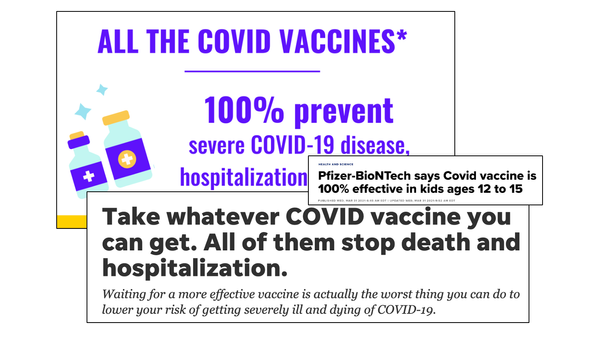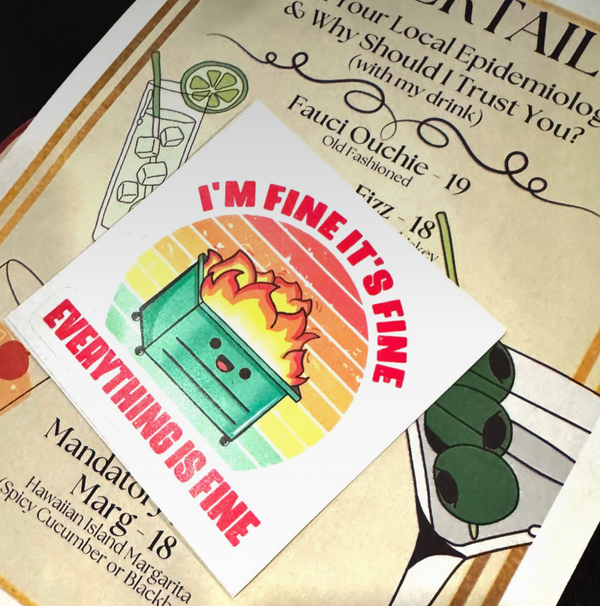Where do new variants come from?

BA.1, BA.2, BA.3, BA.4, BA.5… while we’re all getting lost in an alphanumeric soup, it’s important to understand why we continue to see new variants. Some have speculated this is evidence of engineering — that “someone” keeps putting these new variants out. Others blame vaccines, arguing that vaccination itself drives the development of variants. Are either of these true?
Thankfully, no. Variants are not a sign of something nefarious, nor are they the product of vaccination. They are one of the most basic things we expect from a living organism.* As long as the virus continues to spread, new variants are expected. Let’s dive into some Genetics 101 to find out why.
*Because viruses are not capable of independent self-replication (they require a host, such as a human cell), some argue that they do not meet the criteria for being “alive.” This is very weird but true.
What are mutations and why do they happen?
First, some definitions. A genetic mutation is a change in the genome of an organism. Every organism has a genome which contains instructions, encoded in long chains of molecules, to make every little protein that the organism needs to function.
Whenever an organism replicates (including dandilions, shih-poos, and viruses), the genome is duplicated so the offspring can have a copy. There are little molecular machines that copy the genome to (ideally) produce an identical version. But sometimes those molecular machines make mistakes. And those mistakes are called mutations.
Not all mutations are bad. Many are just “meh” and have no functional consequence. Some mutations will mess up a critical function, and will make that dandilion, shih-poo, or virus worse off. And a few rare ones provide an advantage (to the organism) — for example, making a virus better at infecting people. Thankfully, viruses cannot “tell” which mutations are going to help it, and then mutate its genome accordingly. It’s just random chance.
What is a 'variant?'
A variant is a new version of the virus, defined by the presence of new mutations. However, we’ve just mentioned that mutations are happening all the time, so does that mean new variants are arising all the time? The answer is yes and no. If we define a new ‘variant’ as any new mutation in the genome, then the answer is yes. By that definition, millions of SARS-CoV-2 variants are circulating right now, and practically every infection produces a new variant or two.
But during the pandemic whenever we talk about “variants,” we are usually referring to variants of concern. These are specific variants that have mutations that change the behavior of the virus (transmissibility, disease severity, etc.). These are given Greek names, like Alpha, Beta, Delta, and Omicron.
Then what are BA.4, BA.5 and all that? Those are the names of “subvariants” of omicron, which just means variants that descended from the original omicron variant. Behind the scenes, scientists have been tracking thousands of different SARS-CoV-2 variants through genetic sequencing, and they created a naming system to keep track of them. So far none of the omicron subvariants have been deemed worthy of their own Greek name, so we’re calling them by their more confusing scientific names (BA.4, BA.5, etc.).
Variants come from infections
So with all that said, where do new variants come from? Variants come from infections. Variants arise from errors during viral replication, and the only time viral replication happens is during an infection. Viruses cannot replicate on their own, so they hijack human cells and use our molecular machinery to do it. This means that the best way to reduce the risk of new variants emerging is to decrease the number of infections, through vaccination and other methods.
Are vaccines like antibiotics?
Some have argued that because vaccine-induced immunity doesn’t always completely destroy every last viral particle, the vaccines are prone to increasing the risk of developing variants that are vaccine-resistant. Some have likened it to antibiotic resistance — if someone has a bacterial infection and they take antibiotics but don’t fully kill off the infection, they are at risk of breeding bacteria that are resistant to that antibiotic. Is this true of the vaccine?
Thankfully, no. This comparison is not accurate because vaccines aren’t drugs like antibiotics, they’re tools that train an entire army of immune fighters.
An antibiotic is like a single weapon that attacks the bacteria. The bacteria only need to figure out how to evade that single weapon to develop resistance. Vaccine-induced immunity is like an entire army with a diverse arsenal of weapons — we have a diverse set of antibodies as well as T cell-mediated immunity that attack the virus in different ways. Vaccine-induced immunity creates immune fighters that target different parts of the SARS-CoV-2 spike protein, so even if the spike protein mutates in one place to evade one set of immune fighters, there are other immune fighters that will still be effective. Said another way, vaccine-induced immunity is like taking many different antibiotics simultaneously, not just one. In order to develop resistance during infection, the virus would have to evade all of these at once, which is very unlikely. So do not worry that getting vaccinated is going to speed up the development of vaccine-resistant variants. It will do just the opposite.
However, if a new variant arises that has the ability to evade prior immunity (either from vaccines or prior infections), then that variant will spread more easily compared to other variants. This is where people get confused… vaccinated people don’t increase the chance of a vaccine-resistant variant arising, but if a new variant does arise that is (by chance) partially resistant to vaccines, then that variant will spread more easily because it is now (at least partially) dodging people’s immune defenses.
If a variant has a mutation in the spike protein, does that mean the vaccines won't work?
Many have been concerned that because our COVID vaccines use the spike protein from the original SARS-CoV-2 virus (also called the OG), any mutations in the spike protein will render the vaccines useless. Luckily, this isn’t how it works.
The spike protein is 1273 amino acids long. When our immune systems respond to the spike protein from the vaccines, we make antibodies that cover all over its surface. Imagine a fluffy cat rolling around in a field of sticky burrs — the burrs are going to get all over the cat’s fur. In the same way, the antibodies stick all over the spike protein.
But unlike burrs, antibodies are unique. Each individual antibody only clings to one specific part of the spike protein surface, latching on based on the shape of the surface at that particular spot. Collectively, all of these unique, individual antibodies coat the spike protein.
This means that if you are vaccinated for COVID, you don’t only have one type of antibody that binds to the spike protein, you have many different types of antibodies that bind different parts of the spike protein.
Now, to variants. A single mutation usually alters only a single amino acid, which generally only slightly changes the shape of spike protein. It’s like altering the shape of one lego in a lego master piece.
If there was an antibody that bound exactly where that amino acid change occurred, then maybe that one particular antibody won’t work as well any more. But because we have many different unique antibodies that target different parts of the spike protein, the spike protein will still be covered with antibodies in other places on the surface. So one single mutation generally doesn’t pose too much of a threat, because it won’t change the shape of the spike protein too much, and the majority of our antibodies will still work very well.
The trouble occurs when there are enough mutations to change the shape of the spike protein significantly. If this occurs, then a higher percentage of our antibodies* won’t stick. This is part of why omicron has infected so many people — there were enough mutations in omicron’s spike protein that it’s shape changed quite a bit, making both immunity from prior infections as well as vaccine-induced immunity less effective. However, less effective doesn’t mean not effective at all: there is still enough similarity to the OG spike protein that the current vaccines do provide some protection, especially against severe disease and death.
*Antibodies are not our only defense against COVID; T cells are another part of the immune system that play an important role in protecting against SARS-CoV-2 infections. However, T cells are a bit more complicated to explain, so to keep it simple this post focuses on immunity from antibodies. To learn more about T cells, check out this post.
In conclusion, new variants are a normal part of life, and are expected to continue as long as the virus continues to infect people. The spike protein lego masterpiece is made up of 1273 different legos, and our immune response creates multiple different antibodies that bind different pieces of that lego masterpiece. Swapping out a few legos (mutations) is generally not enough to render that antibody arsenal totally useless, but it can make it somewhat less effective.
In our next post, we’ll tackle BA.5, the highly transmissible omicron subvariant that is currently sweeping the US — how well do the vaccines work and what’s the deal with reinfections?




